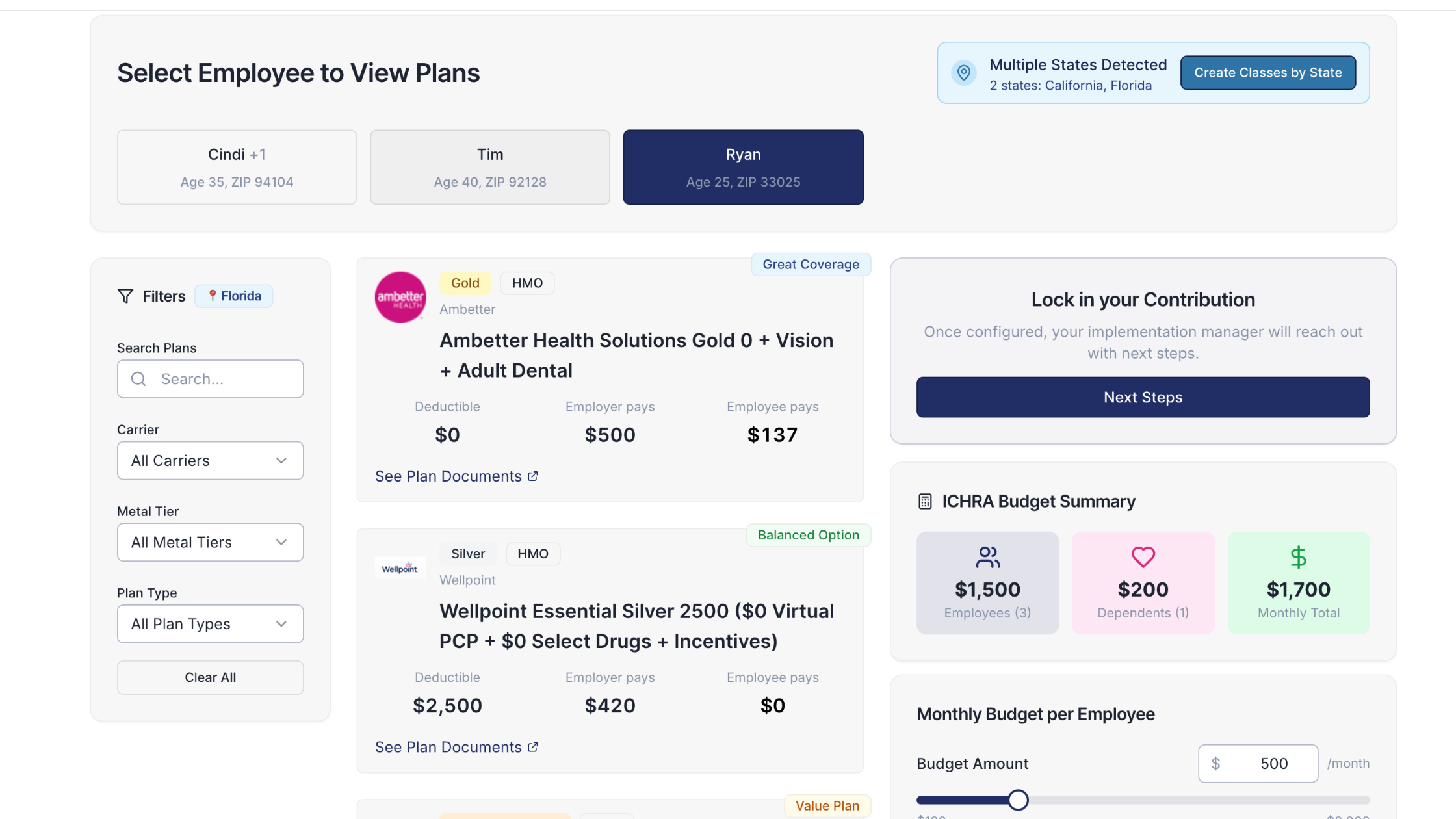The Relationship Between an HRA and an HDHP - Explained

HDHPs and HRAs empower consumers to make informed choices about their healthcare, encouraging cost-conscious decisions while providing financial support for necessary medical expenses.
Understanding High Deductible Health Plans
HDHP stands for High Deductible Health Plan. As the name suggests, these plans have higher deductibles than their non-HDHP counterparts.
What's a deductible, you ask? Well, think of it as that pesky entrance fee you have to pay before your insurance swoops in to save the day. With HDHPs, the idea is that you take on a higher deductible in exchange for lower monthly premiums.
It's like saying, "I'll pay more upfront, but I'll save later." So, if you're a daredevil who rarely visits the doctor and is allergic to monthly premiums, the HDHP might be your healthcare superhero!
The logic of n HDHP is that the higher deductible encourages you to be more mindful of your healthcare choices and expenses. This can mean researching the cost of procedures, seeking more affordable options, and even negotiating prices with healthcare providers. It's like becoming your own healthcare detective, searching for the best deals and making informed decisions.
But what happens if you do need extensive medical care? Well, that's where the safety net of insurance comes into play. Your insurance coverage kicks in once you meet your deductible, providing you with the financial protection you need. It's like having a shield that protects you from the high healthcare costs.
Exploring the Benefits and Drawbacks of HDHPs
Now that we know what HDHPs are all about, let's discuss their perks and pitfalls.
One major benefit is their compatibility with Health Savings Accounts (HSAs). HSAs allow you to sock away some cash pre-tax to cover those high deductibles and other eligible medical expenses. If you don’t need your HSA funds, you can use the money as retirement savings.
The drawback of a HDHP is the need to budget and plan for healthcare expenses carefully. With a higher deductible, you'll need to ensure that you have enough funds set aside to cover any unexpected medical costs.
Decoding Health Reimbursement Arrangements
Let's now shine a spotlight on HRAs, or Health Reimbursement Arrangements. These nifty beasts are employer-funded benefit plans that help you cover those pesky medical expenses.
How HRAs Can Help Cover Medical Expenses
With HRAs, employers contribute funds to a tax-advantaged account on your behalf. You can then use this magical pot of gold to pay for eligible healthcare expenses.
Imagine this: you need a new pair of glasses. You visit your eye doctor, pick out the perfect frames, and when it's time to pay, you simply whip out your HRA card. The funds from your HRA account magically cover the cost.
But that's not all! Let's say you have a copay for that visit to the specialist. You can use the funds from your HRA account to take care of that copay, ensuring you receive the necessary medical care without breaking the bank.
Now, each HRA has its own rules and regulations, so it's essential to familiarize yourself with what your specific HRA covers. Some HRAs may cover many expenses, including prescription medications, dental care, and alternative therapies like acupuncture. Others may have more limited coverage. But fret not, my friend, because your HR department will be there to guide you through the perplexing maze of HRA details.
So, the next time you face a medical expense, remember that your HRA is there to lend a helping hand. It's like having a trusty sidekick by your side, ready to assist you in your healthcare journey. With HRAs, you can easily navigate the world of medical expenses, knowing that you have a powerful tool at your disposal.
The Relationship Between HRAs and HDHPs
Employers can offer HRAs and HDHPs together or separately, depending on their employees' needs and the company's healthcare strategy.
When offered together, HRAs complement HDHPs by providing a financial cushion to help employees cover their higher out-of-pocket costs, making the transition to a high-deductible plan more manageable. This combined approach encourages cost-conscious healthcare decisions while offering some financial support.
On the other hand, employers can also choose to offer HRAs or HDHPs as stand-alone options. This allows for more customization, as employees can select the plan that best aligns with their healthcare preferences and financial situations.
The flexibility to offer these options together or separately reflects the diversity of healthcare needs among employees and provides a range of choices to suit different circumstances.
You got questions, we got answers!
We're here to help you make informed decisions on health insurance for you and your family. Check out our FAQs or contact us if you have any additional questions.
Explore more related content
What is Venteur
Explore the best human-first Health Insurance platform
Simple, personalized health benefits
Sign up in minutes, define your contribution, and let your employees choose the health plan that works right for them
Integrations to make everything run smoothly
We'll connect with your payroll and finance systems to make deductions and premium payments seamless
Easy onboarding and off-boarding
In just a few clicks, add your roster and make updates on the fly. We'll handle it from there.
Venteur Certified Brokers to help your employees pick the right plan
Our trusted brokers ensure the best outcomes for employees and employers by unlocking health savings and providing unrivaled plan options.
AI-powered plan recommendations to give you confidence while you shop
Backed by 30 years of healthcare data, Venteur’s AI helps employees compare and choose the best plan for their unique situation.
Compliance and reporting because no-duh!
Venteur manages plan administration, reporting, and compliance so you can focus on growing your business.


